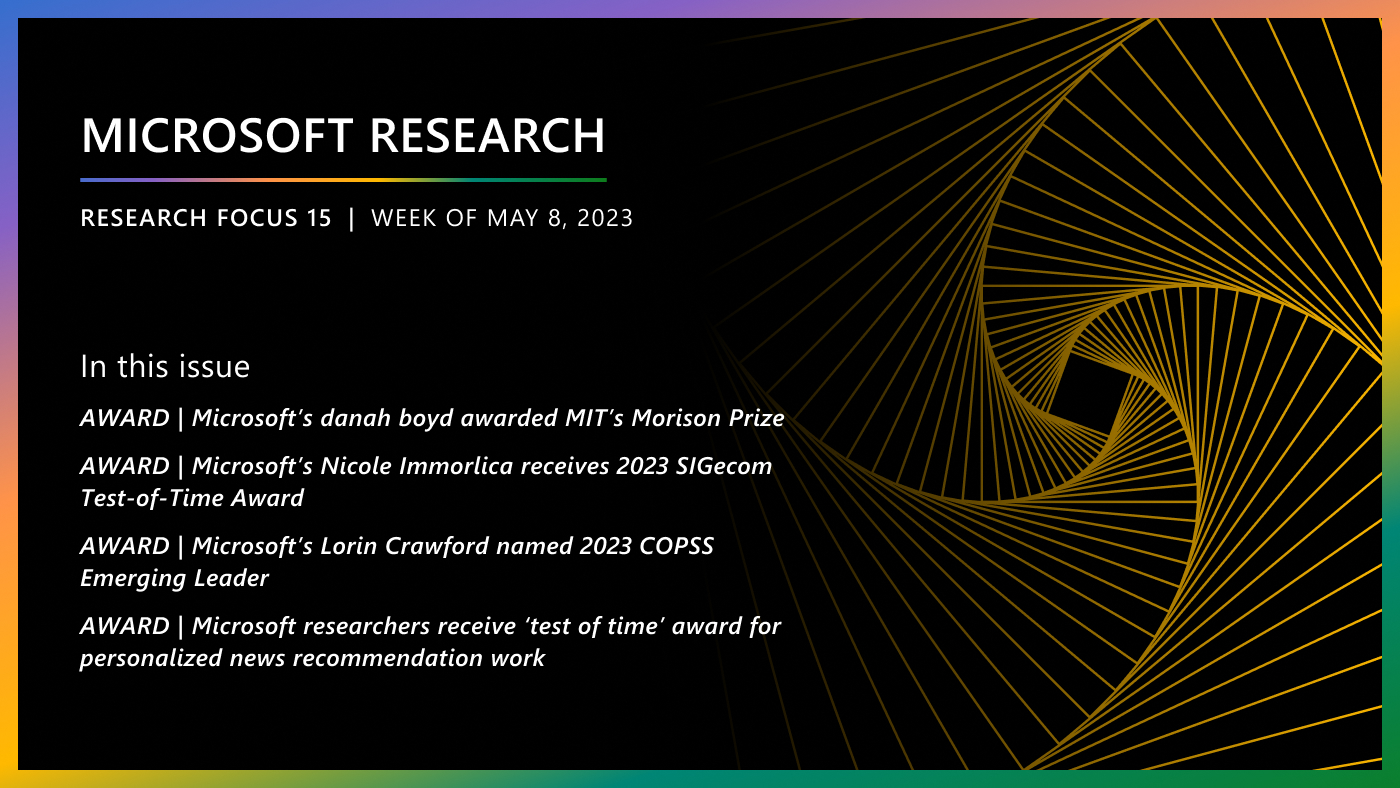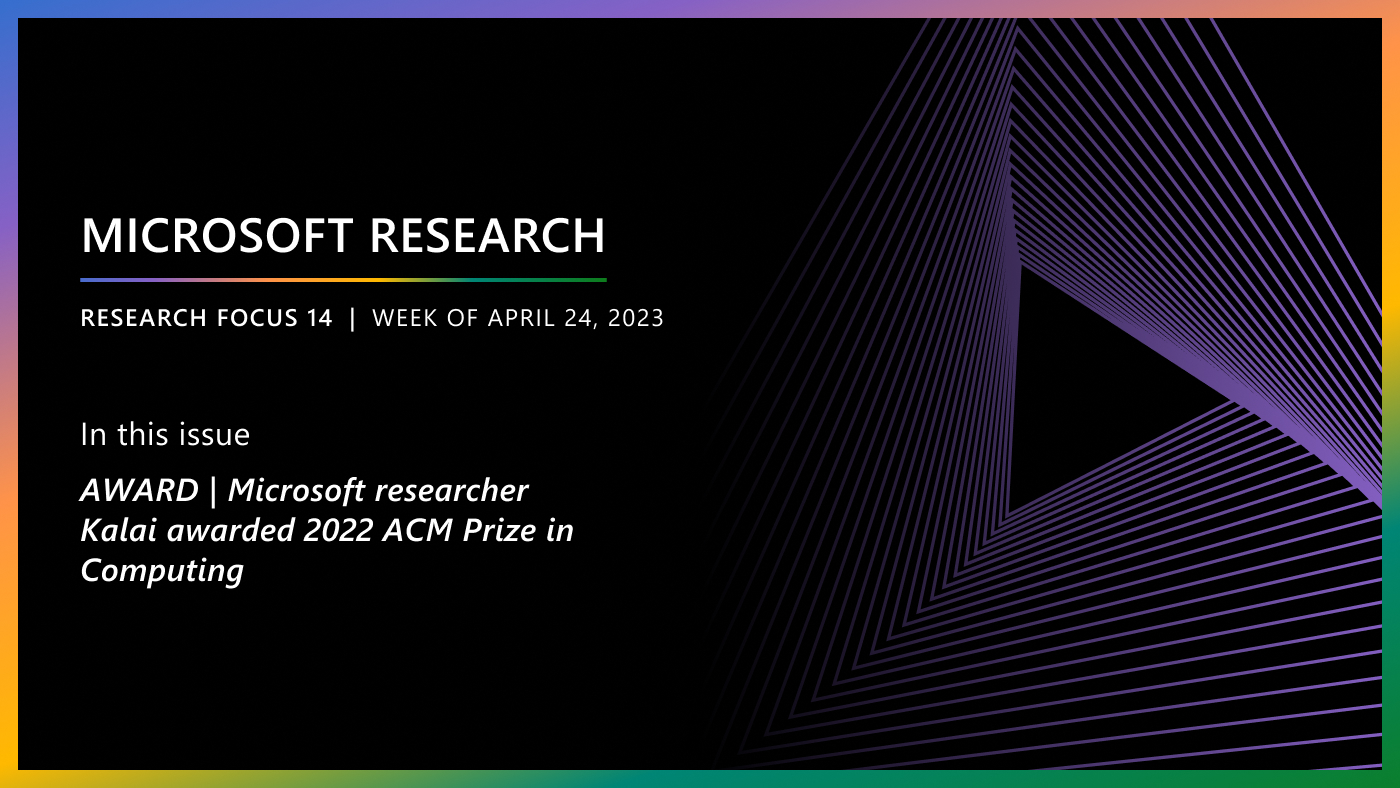
Welcome to Research Focus, a new series of blog posts that highlights notable publications, events, code/datasets, new hires and other milestones from across the research community at Microsoft.
Meet the 2022 recipients of the Microsoft Research Global PhD Fellowship
Microsoft is thrilled to announce the 2022 Microsoft Research Global PhD Fellows from around the world. The program aims to empower the next generation of computing-related research talent. Microsoft recognizes the value of diversity in computing and aims to increase the pipeline of talent receiving advanced degrees in computing-related fields to build a stronger and inclusive computing-related research community. We currently offer PhD fellowships in Asia-Pacific, Canada and the United States, EMEA (Europe, Middle East, Africa), Latin America, Australia and New Zealand.
Making the most of text semantics to improve biomedical vision-language processing
Benedikt Boecking, Naoto Usuyama, Shruthi Bannur, Daniel Coelho de Castro, Anton Schwaighofer, Stephanie Hyland, Maria Teodora Wetscherek, Tristan Naumann, Aditya Nori, Javier Alvarez-Valle, Hoifung Poon, Ozan Oktay
Multi-modal data abounds in biomedicine, such as radiology images and reports. Interpreting this data at scale is essential for improving clinical care workflows and accelerating clinical research. With its complex semantics, biomedical text poses additional challenges in vision-language modelling, and previous work has used insufficiently adapted models that lack domain-specific language understanding. In this study, we show that principled textual semantic modelling can substantially improve contrastive learning in biomedical vision-language processing (VLP). We release a language model (CXR-BERT (opens in new tab)) that achieves state-of-the-art results in radiology natural language inference through its improved vocabulary and novel language pretraining objective. Furthermore, we propose a self-supervised joint VLP approach (BioViL (opens in new tab)) with a focus on better text modelling. It establishes new state-of-the-art results on a wide range of publicly available benchmarks, in part by leveraging our novel domain-specific language model. As part of this study, a new dataset (MS-CXR (opens in new tab)) is released to facilitate the study of complex semantic modelling in biomedical VLP, which includes locally aligned phrase grounding annotations by radiologists. A broad evaluation, including on this new dataset, shows that our contrastive learning approach outperforms prior methods in segmentation tasks, despite only using a global-alignment objective.
Microsoft research podcast
How AI Happens podcast: A conversation with AI4Science Senior Director Bonnie Kruft
Microsoft’s AI4Science Senior Director Bonnie Kruft (opens in new tab) was interviewed for a recent podcast (opens in new tab) in the “How AI Happens” series. Tune in to learn about her journey from earning a Ph.D. focused on quantum chemistry to working in AI and machine learning. She explains how she first discovered her love of data science, and how her Ph.D. equipped her with the skills she needed to succeed. The conversation also covers the data science approach to problem-solving, deep learning emulators and the impact that machine learning could have on the natural sciences.
Recent researcher awards and accomplishments
Ronen Eldan wins prestigious New Horizons in Mathematics Prize
Ronen Eldan, of Microsoft Research and the Weizmann Institute of Science, was awarded the prestigious New Horizons in Mathematics Prize (opens in new tab) by The Breakthrough Prize Foundation. Eldan was recognized for creating the stochastic localization method, which has led to significant progress in several open problems in high-dimensional geometry and probability, including Jean Bourgain’s slicing problem and the KLS conjecture.
The Breakthrough Prize Foundation and its founding sponsors – Sergey Brin, Priscilla Chan and Mark Zuckerberg, Julia and Yuri Milner, and Anne Wojcicki – announced the 2023 award winners in September. The foundation highlights game-changing discoveries in fundamental physics, life sciences and mathematics, along with early-career scientists who have made significant contributions to their fields.
Gary J. Sullivan named Fellow of the Society of Motion Picture and Television Engineers
Microsoft’s Gary J. Sullivan (opens in new tab) was recognized as a 2022 Fellow of the Society of Motion Picture and Television Engineers (opens in new tab) (SMPTE). The membership grade of fellow is awarded to individuals who have, by proficiency and contributions, attained an outstanding rank among engineers or executives in the motion-picture, television or related industries, according to SMPTE.
Sullivan is a principal video and image technology standardization program manager at Microsoft Research in Redmond, Washington. At Microsoft, he has been the originator and lead designer of the DirectX Video Acceleration (DXVA) video decoding feature of Microsoft Windows and in the international standardization community, he has led team projects that have been recognized by three Emmy Awards. His standardization work includes chairing or co-chairing various projects related to media compression in the JPEG, MPEG, and VCEG standards groups, including the AVC (H.264), HEVC (H.265) and VVC (H.266) video compression codec design projects. He is currently the chair of ISO/IEC JTC 1/SC 29, which oversees the work of JPEG and MPEG, and the Rapporteur of video and image coding in ITU-T SG16.





